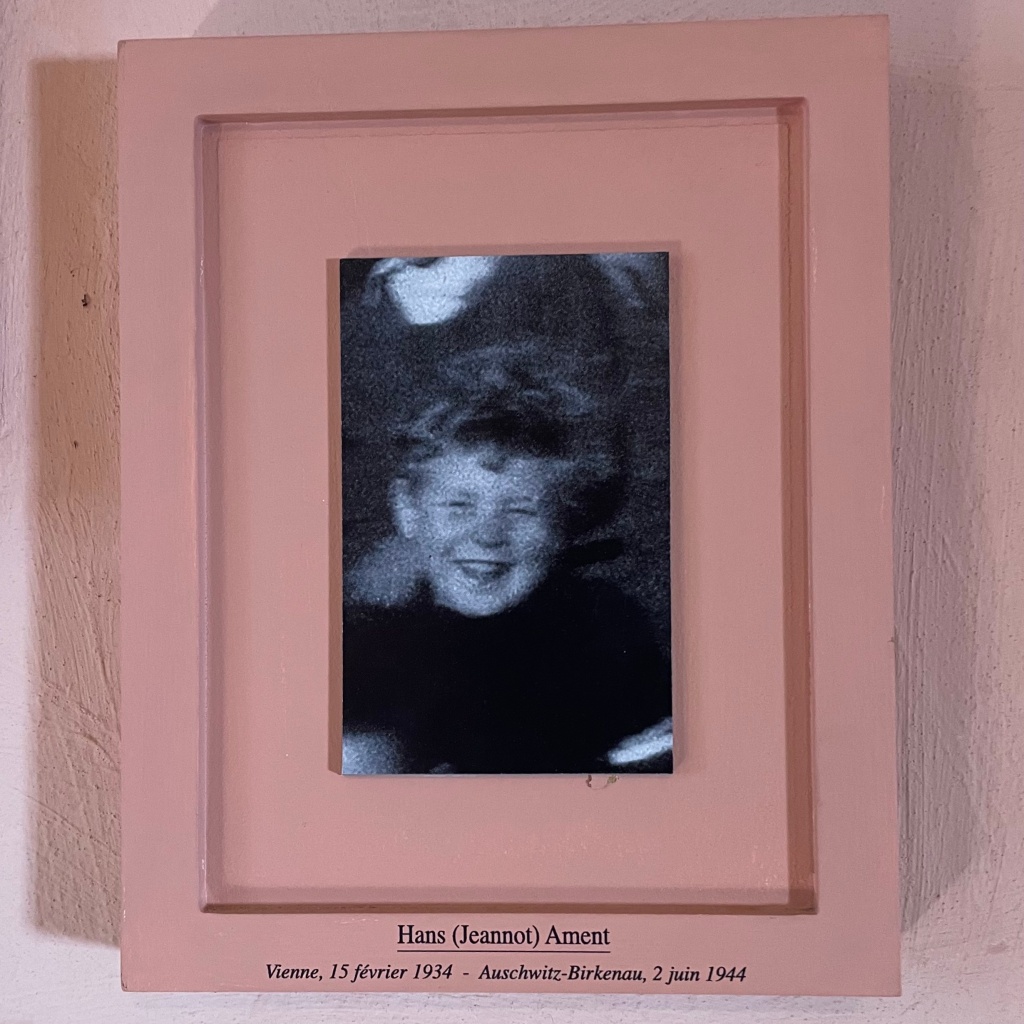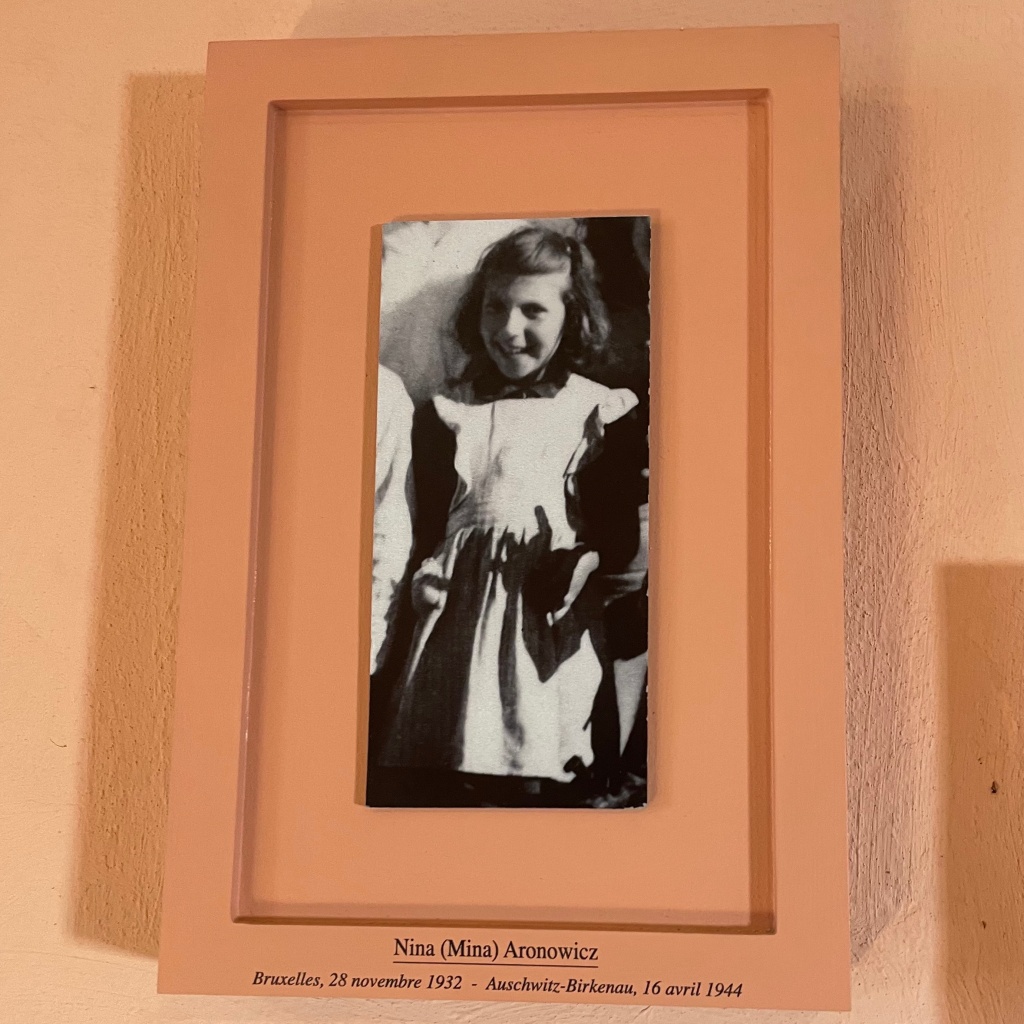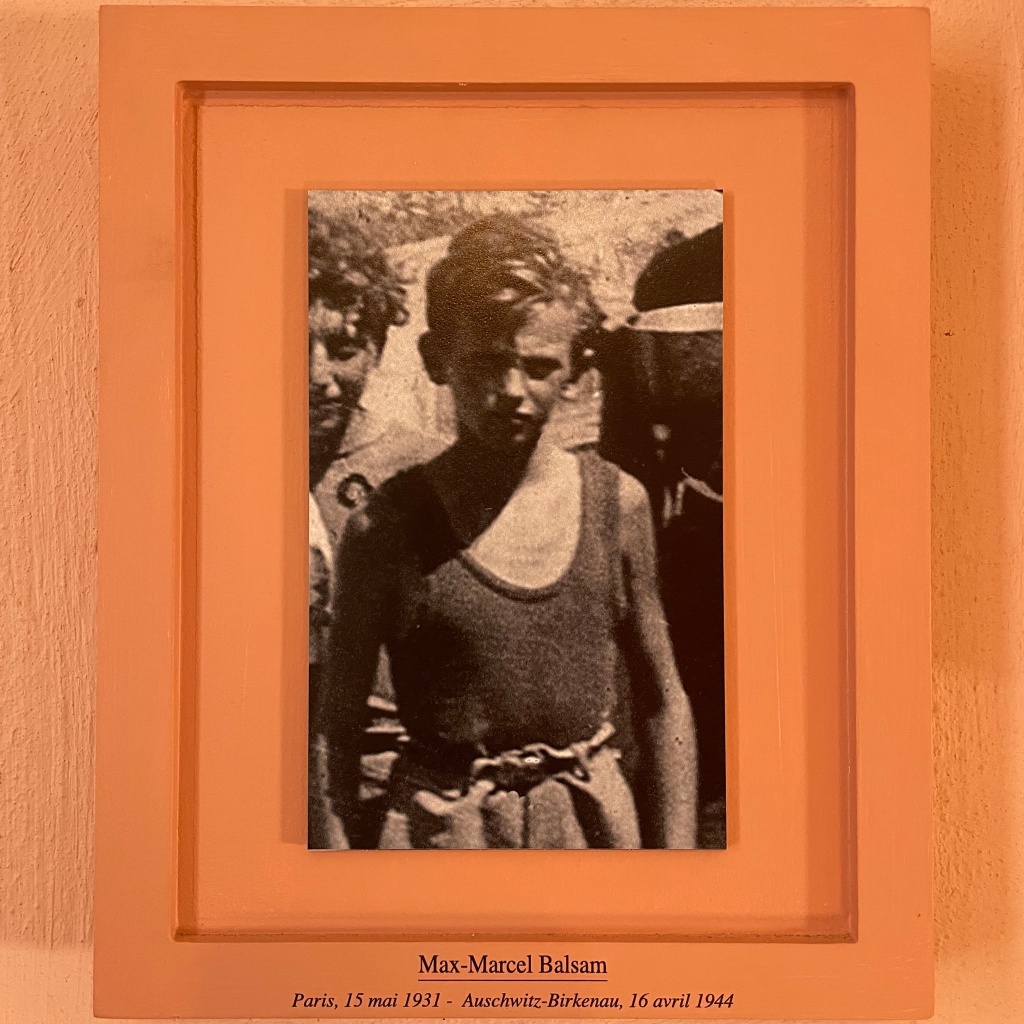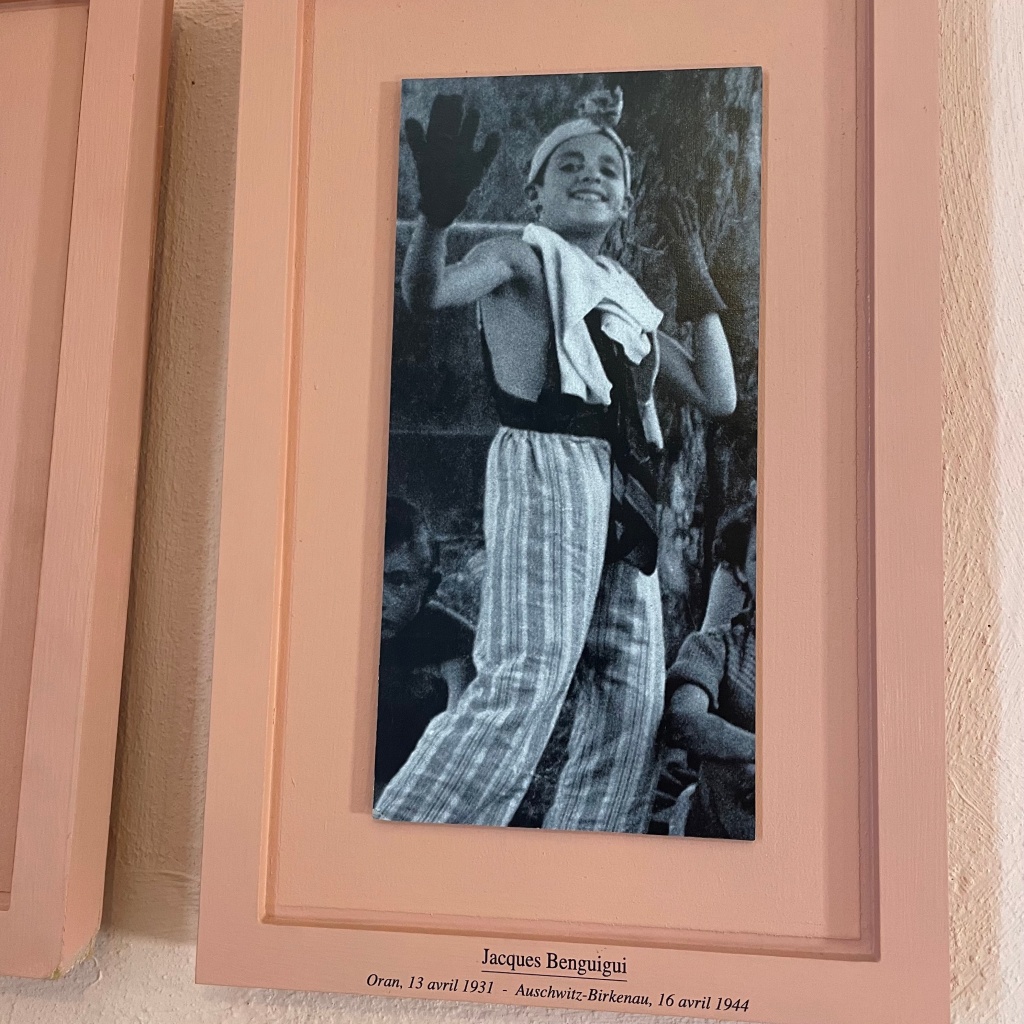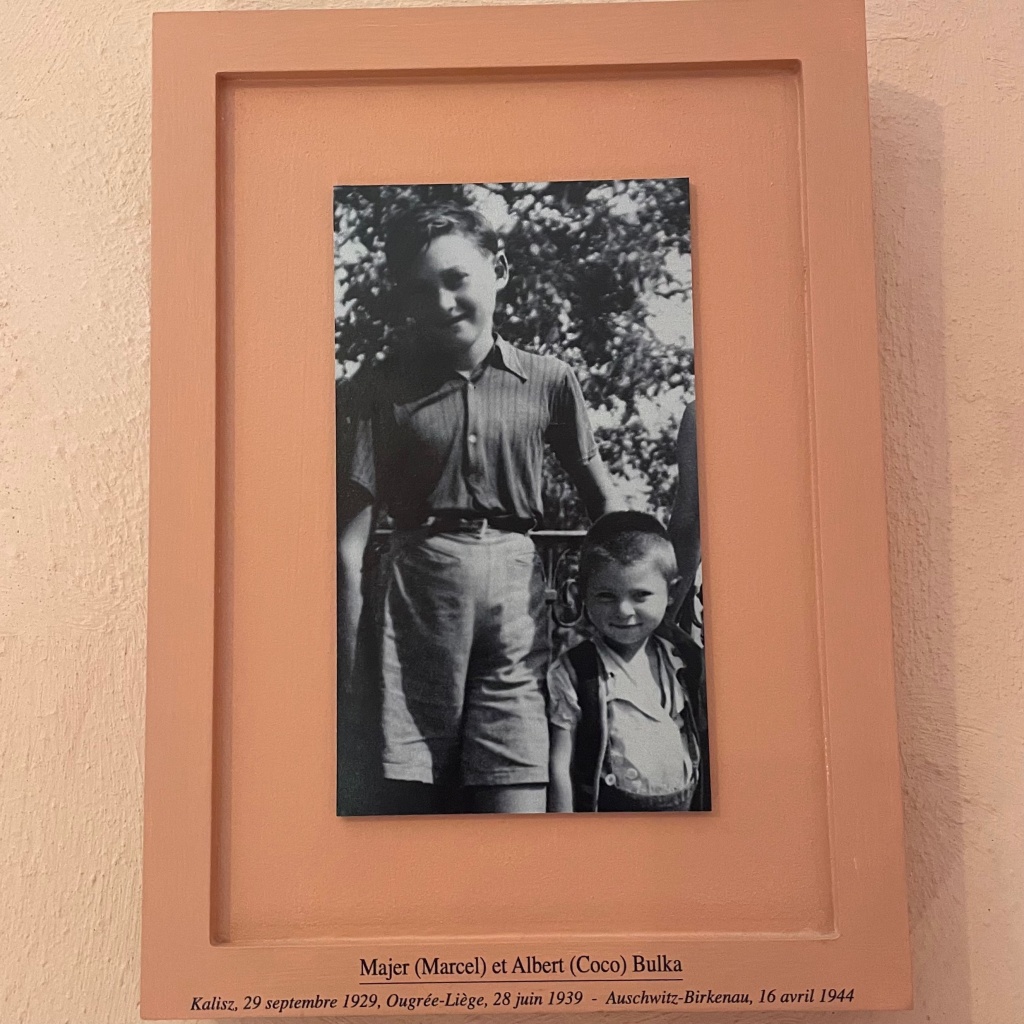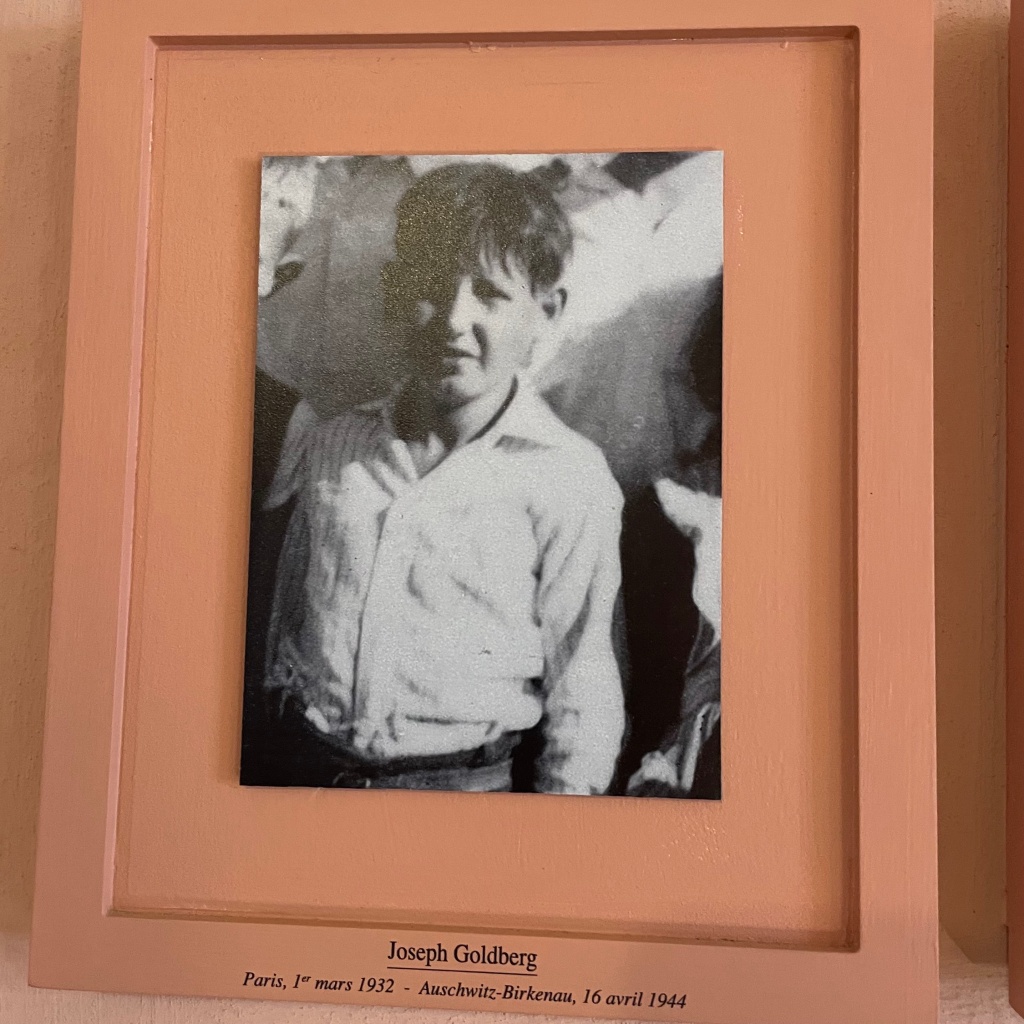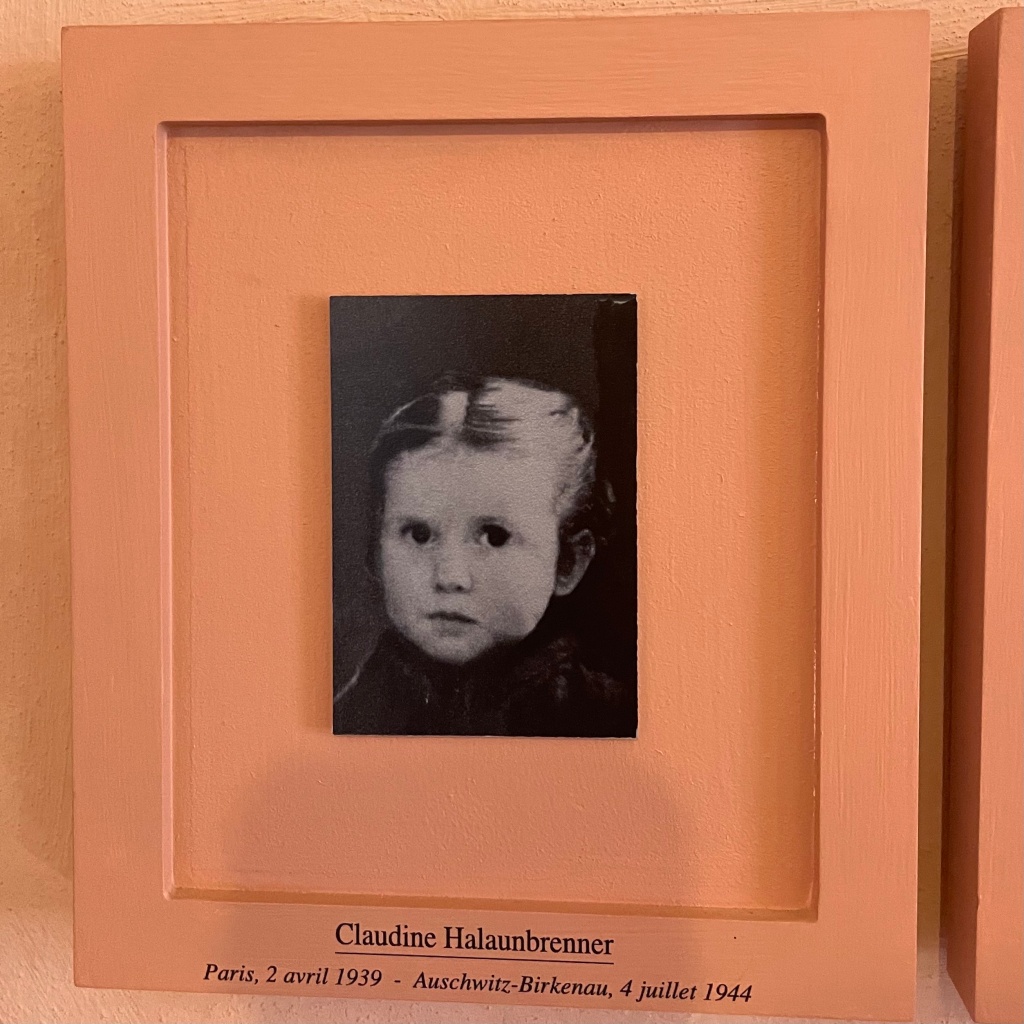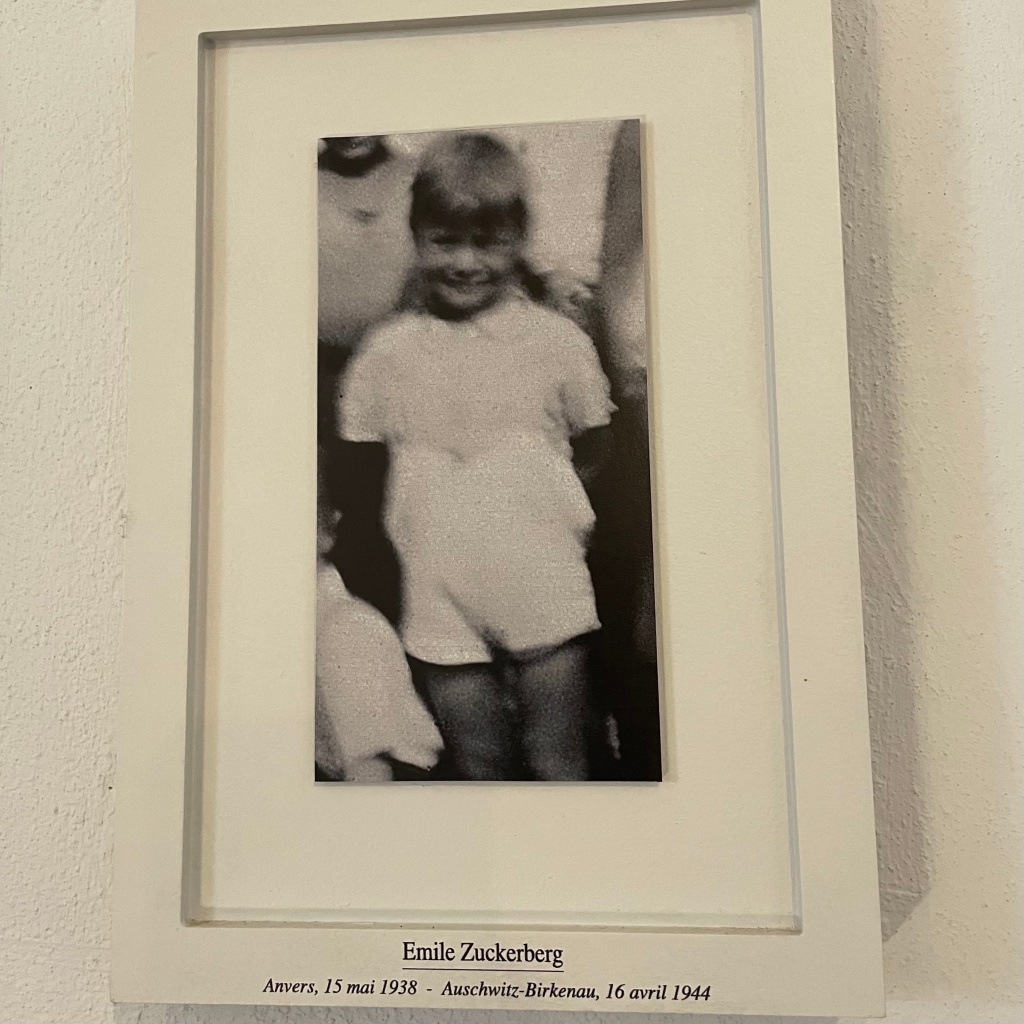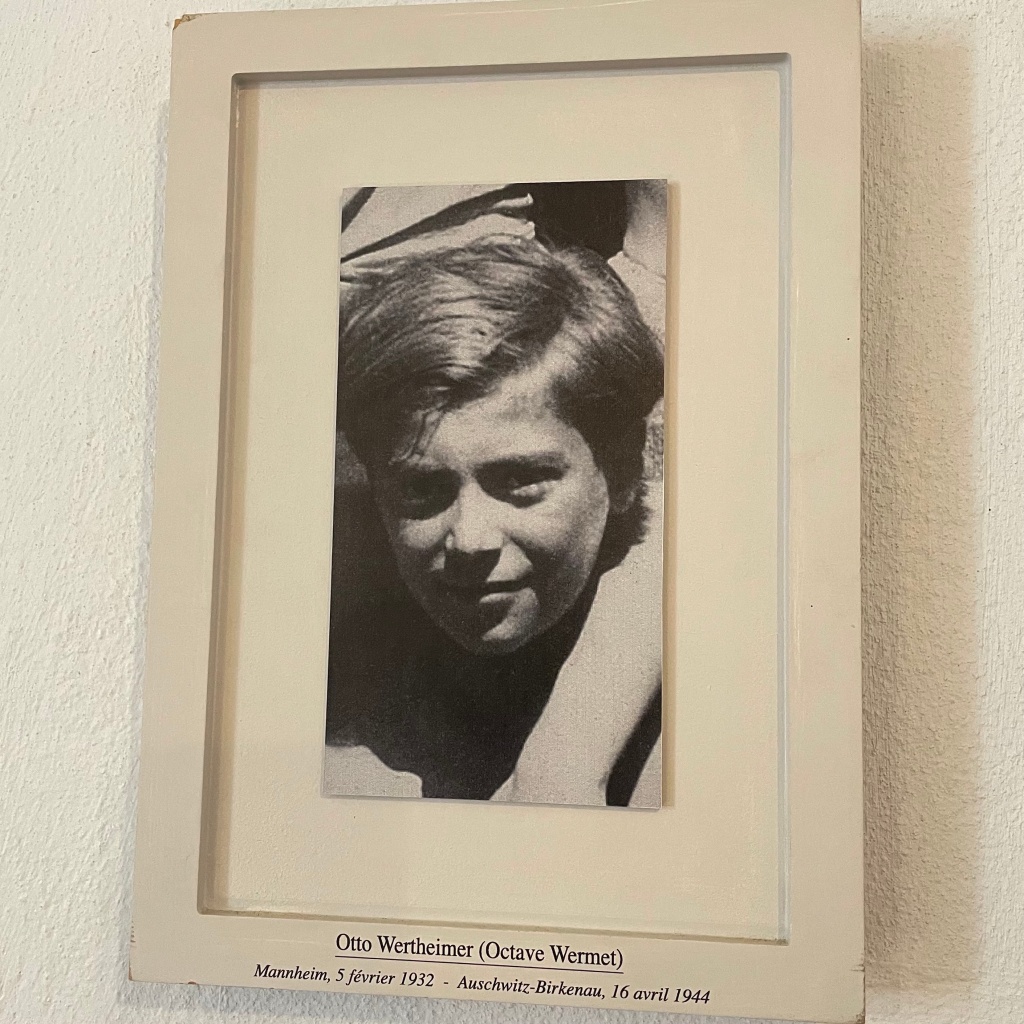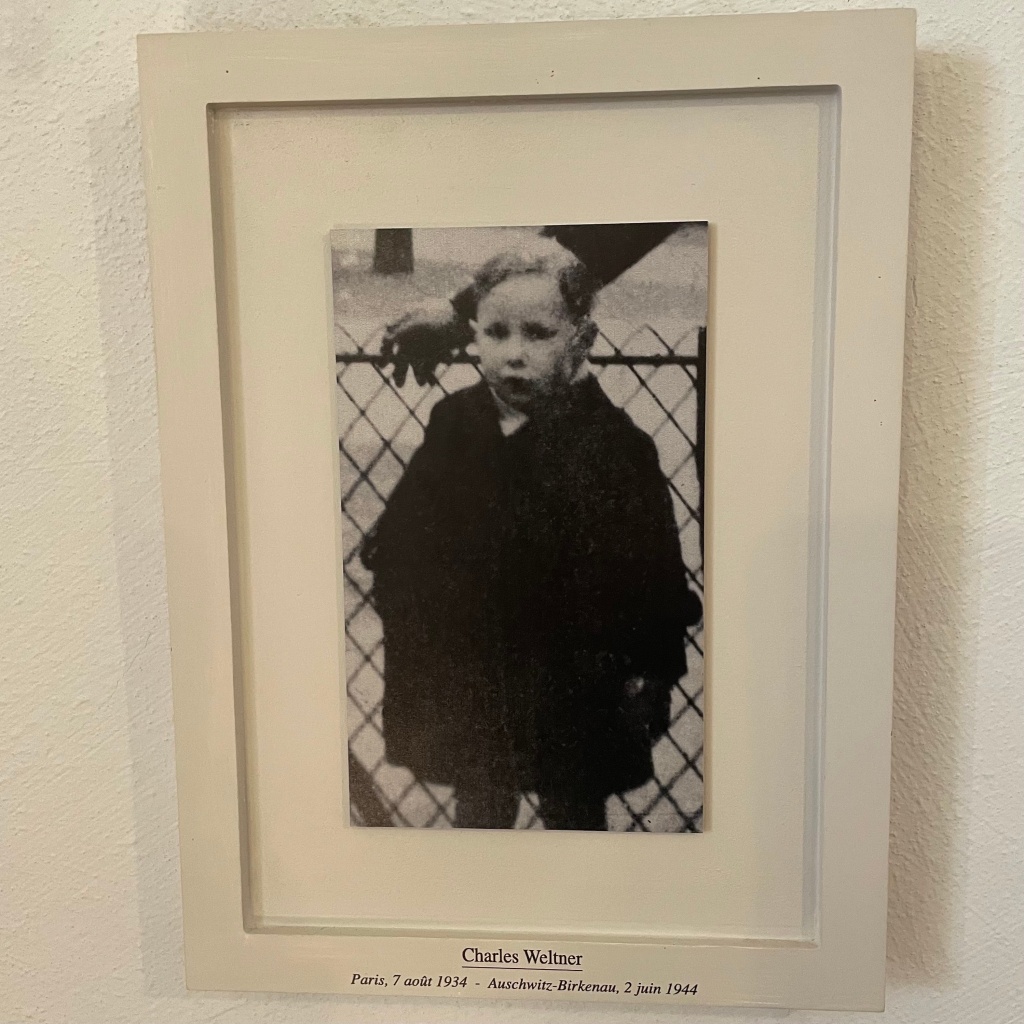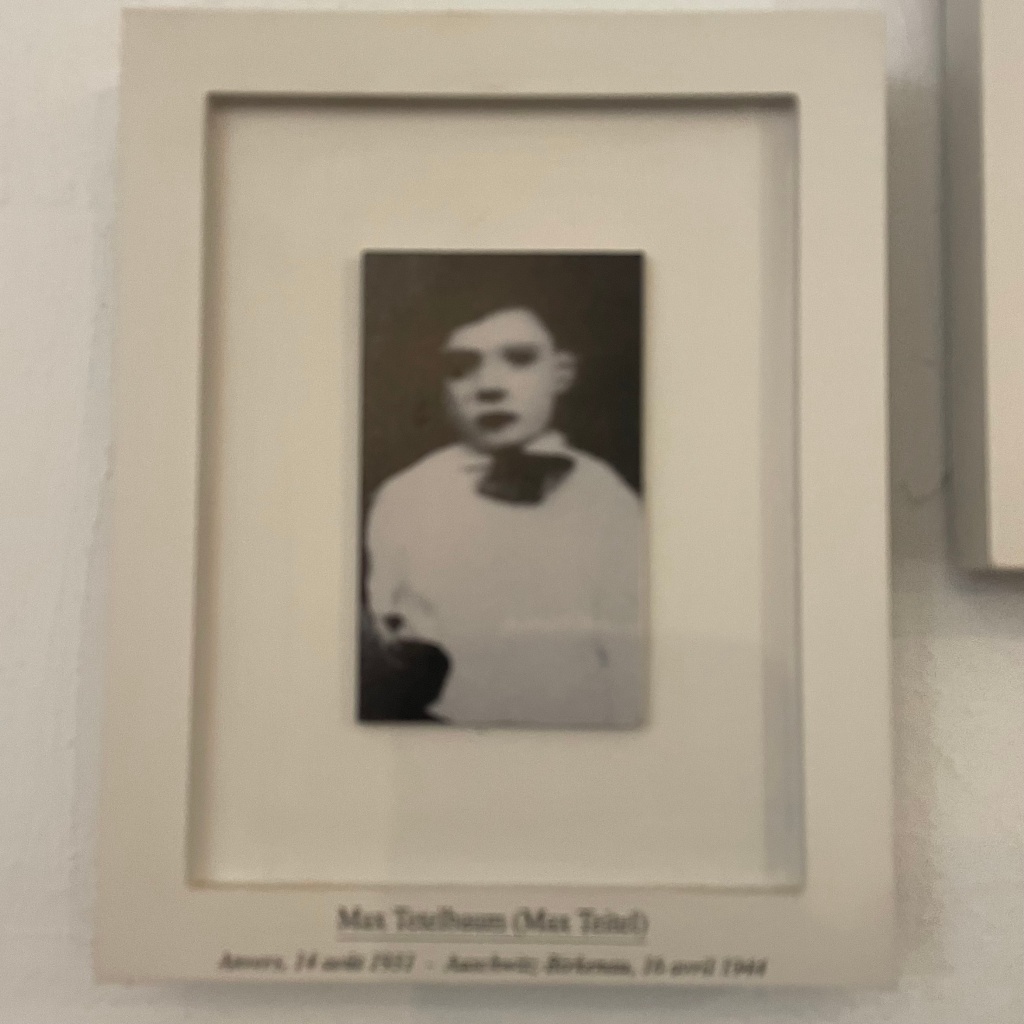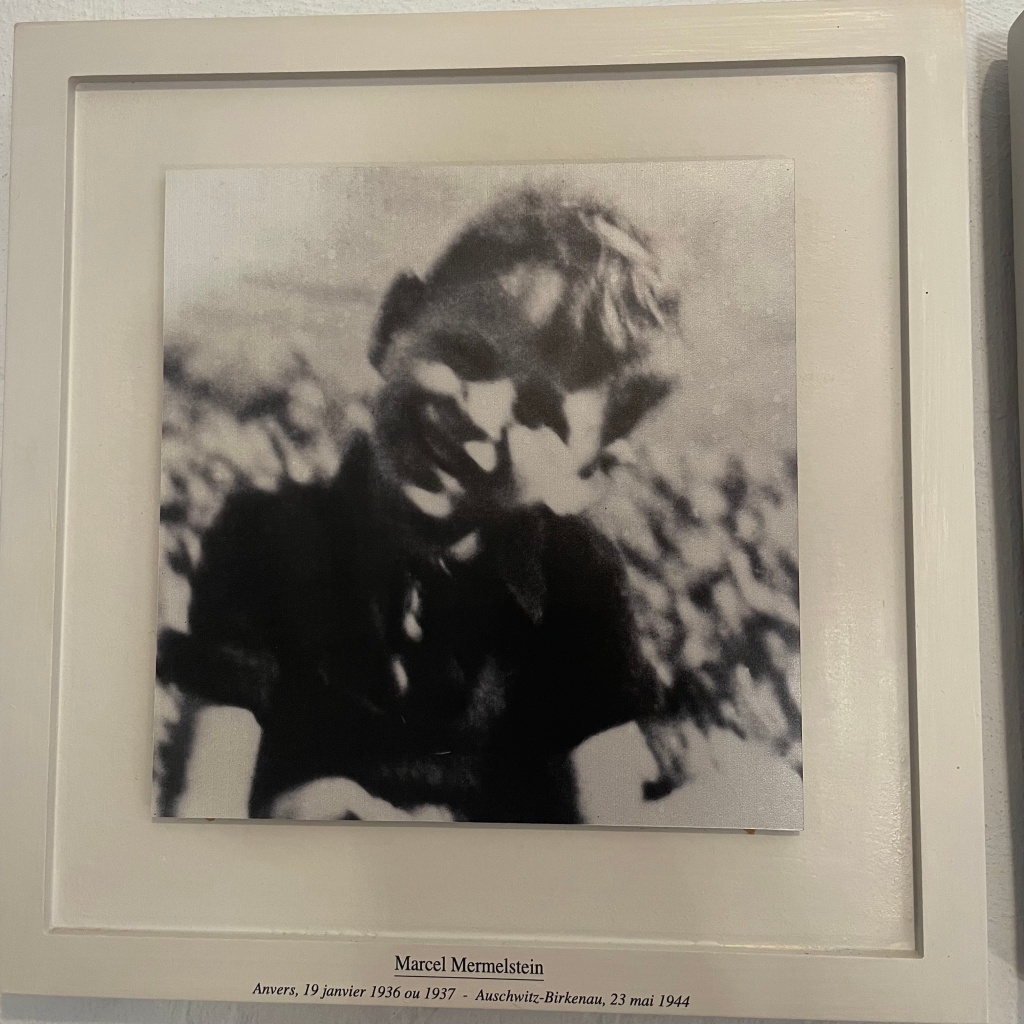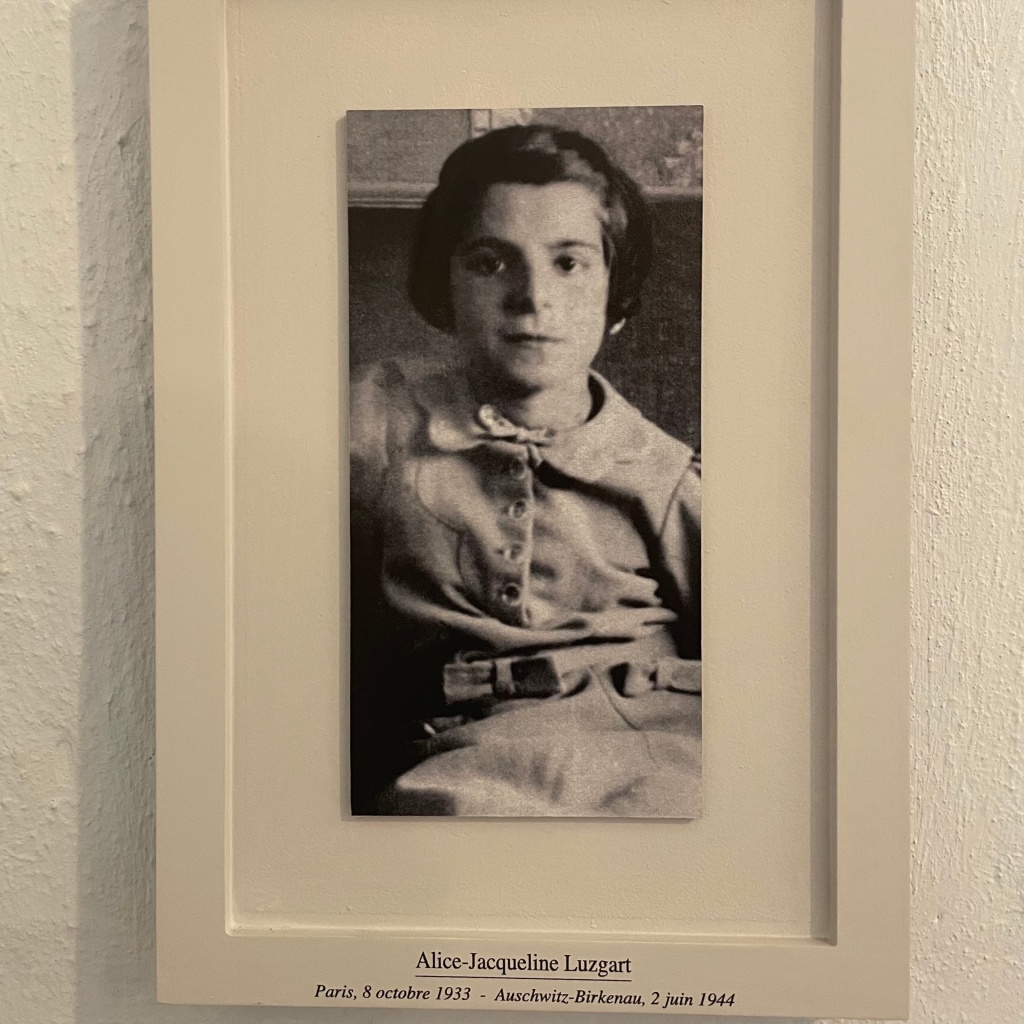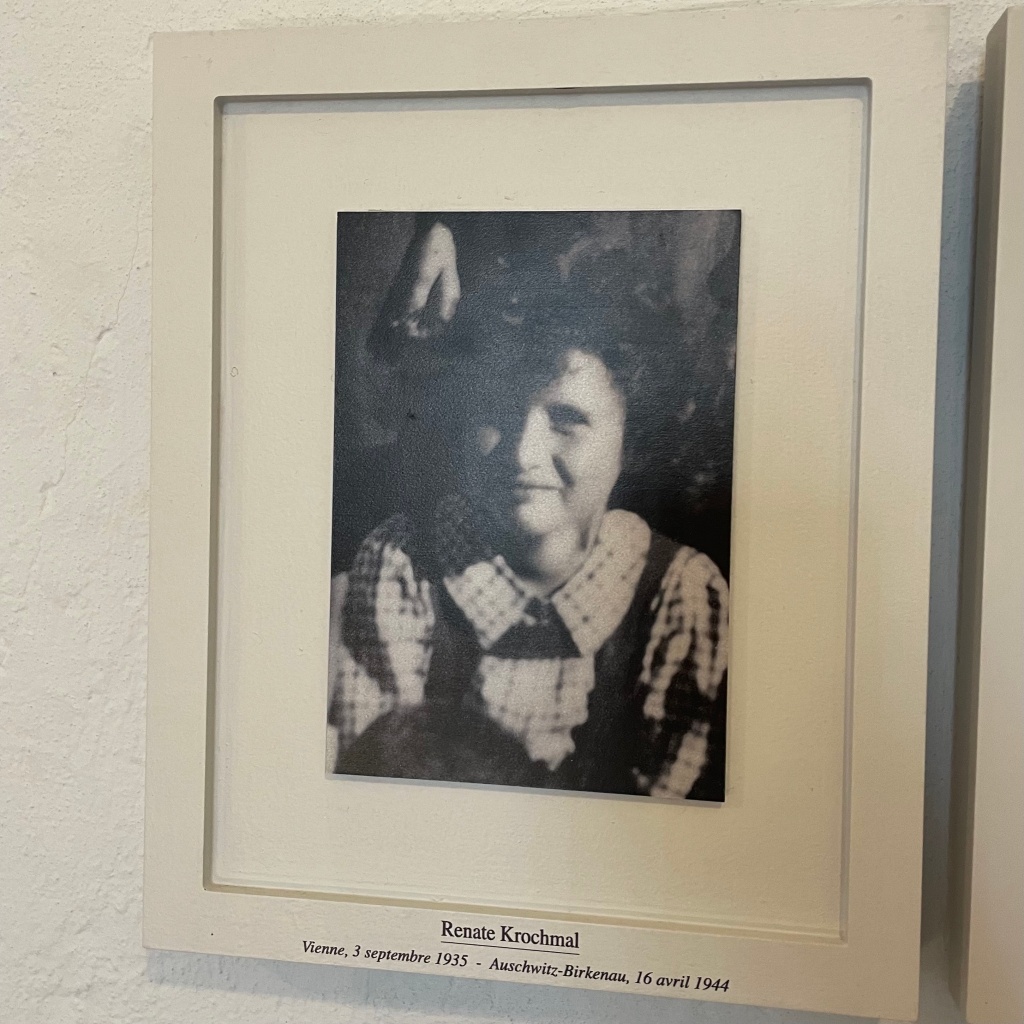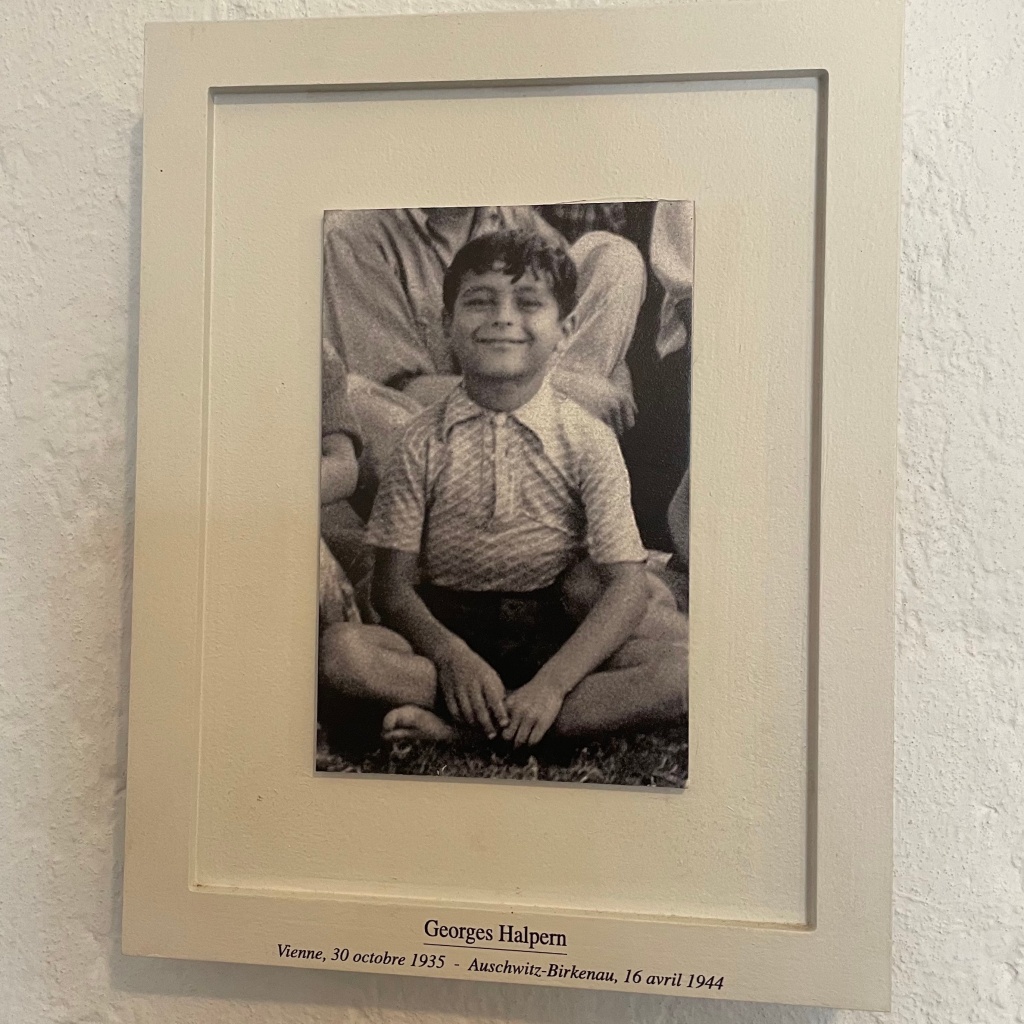paris as text
“(Partially) Revolutionizing Paris,” by Karina Gonzalez of FIU in Paris on July 2nd, 2022
“I ought to be jealous of the tower. She is more famous than I am.”
Gustave Eiffel
By the end of the 1889 construction, it would have been impossible to predict the impact the Iron Lady would have all over the world. Though, a part of me cannot help but think of the step forward the Eiffel Tower took in revolutionizing France, yet the step back it took in revolutionizing equality for women.

Having grown up in the United States, Lady Liberty had always been one of my favorite statues to have seen. The connection I felt knowing that the Statue of Liberty stood for the people of the nation, as well as justice and freedom, was beyond recognition. In a way, I wanted to feel the same of the Eiffel Tower. Although the symbolic meaning varied from that of Lady Liberty, it was incredible to know that an engineering creation that was not favored by the public in 1889, still stood today as one of the most famous creations of all time.
The Eiffel Tower was not built to represent the freedom. However, it was a symbol designed for the World Fair commemorating the 100-year anniversary of the French Revolution; a revolution whose goal was to eliminate the injustices and rights of the monarchy.
It is believed by some historians that modern industrialization for France kicked off in the 1830’s; thus, followed by the engineering and creation of the Eiffel Tower 57 years later (1887). Although the structure and name of the Iron (Eiffel) Lady was created by Gustave Eiffel (entrepreneur), there are few other men who take the spotlight for her creation, such as: Maurice Koechlin and Emile Nouguier (engineers) and Stephen Sauvestre (architect).
Being in front of the Tower was intimidating, to be frank. Knowing that one of the most iconic statues created, that I had only ever seen in movies or pictures online, was in front of me, felt surreal. In a way, I even felt a bit inspired hearing the how much opposition was received for the creation and engineering of the Tower, even after she was built and was receiving fame. Artists would, and still do, refer to the Tower as a phallic structure- comparing its architecture to be phallic. But the closer I looked at the tower, and the more I learned about it, the more uncertain I felt.
The Eiffel Tower took a large step forward for modern industrialization and implementing the visible line between science and church. At the time, only churches were seen as the tallest buildings because they were closest to the Heavens or Gods; the Eiffel Tower did away with the thought of allowing only churches to be the tallest buildings and became one of the tallest free-standing buildings in the world. Around the Tower, 72 names can be depicted as the scholars and scientists that worked on the creation of the Tower herself. One very pressing detail that can be noticed, however, is the lack of female scholars.
It is important to note that although industrialization was growing and women’s rights were beginning to be recognized, it was not until 1944 when women’s suffrage was obtained in France. This had caught me a bit by surprise, after researching that Marie-Sophie Germain, played a vital role, known for her number theory and elasticity, in the construction of the Eiffel Tower. Marie-Sophie received recognition from the Institute de France and became the first woman to attend the Academy of Sciences, yet no recognition was given on either of the four sides of the Eiffel Tower.

Additionally, while there is little-to-no information on the duties that Gustave Eiffel’s daughter, Claire Eiffel, had, she is also known to have helped her father carry out the execution and succession of the Eiffel Tower.
Seeing and climbing the Eiffel Tower left an impressionable feeling that surely has no comparison. However, knowing that 132 years have passed and there has been little to no mention of the forgotten women who helped built the Tower, is unsettling. Especially, living in an era where women’s rights fluctuate and are continuously infringed on in various parts of the world.
VERSAILLES AS TEXT
“The Gilded Palace of Versailles,” by Karina Gonzalez of FIU in Versailles on July 3rd, 2022
“Whatever side I take; I know well that I will be blamed.”
Louis XIV

If we were to point fingers at every individual who has done harm to mankind, the honest truth is that we would never stop pointing. Unfortunately, the world we live in today, has been built from both positive steps forward and cruel step backs in society. King Louis XIV and his creations are no exception.
The Versailles we know today, is not the same Versailles that existed before the rule of King Louis XIV. Its original purpose served as a hunting lodge built by Louis XIV’s father, Louis XIII. The visits to the chateau of Versailles began at a young age. Gradually, Louis XIV began developing a fondness for the chateau, eventually deciding to undertake the renovations and new architecture of the location.
However, even kings have their own fears.
Having entered into the royal world of responsibilities at the age of four, King Louis XIV lived a difficult, but sheltered life in the eyes of the common people. Between the years of 1648-1653, the young King faced the civil conflict within France; disputes between the monarchy and the Parliament de Paris eventually reached the aristocracy. The young King quickly learned from what he bared witness to.
The Royal Family did not always take residence at the Versailles Palace, however, that came after. Originally, the family resided in the “Louvre Palace, then moving to Tuileries, alternating with stints at the Châteaux of Saint-Germain-en-Laye, Vincennes, and Fontainebleau” before finally staying at the Versailles Palace. Many, specifically the Noble, undermined the ability of King Louis XIV. With this in mind, his life was always greatly at risk of extortion and even death.
The embodiment of Versailles created a sovereign vocal point for the Royal family, making it almost impossible for the nobility to plot against the throne. The King was in control of everything, because the King’s architectural plans for Versailles consisted of housing the whole court.
King Louis XIV, as a King, did not serve the common people to the best of his ability. In fact, the creation of Versailles was done at a time when France did not have the finances to spare- nor did the people of France have the resources to live their daily lives. People were starving, and they were dying, but Louis XIV’s vision of creating Versailles at the center point of France continued straight ahead. However, there is no perfect ruler of a society.
While King Louis XIV did adjust his focus on his personal agenda, rather than the people who ruled over, he did provide the gateway to some of the most influential aspects we see today: the arts.
One of the main reasons Louis XIV patronized in the arts was because of his desire to glorify the power he had, but in the royal courts. Louis XIV, who had already grown up educated in writing and art, focused on showcasing the wealth and strength he, the Sun King, had over his kingdom. What better way to show the power you had, by throwing an exclusive grand ball or creating a 2,300 room (over 63,154 m2) palace?
His love for the arts was not all bad, though. Because of King Louis XIV, the Académie Royale de Danse was opened in 1661. This became the first dance institute established on the Western side of the world. The academy oversaw the training of upcoming artists and controlled what they would be studying. In a way, it was an extent of King Louis XIV’s power additionally, because he was molding what the upcoming artists could learn and create.
There are many negatives to what King Louis XIV did. While Versailles is now known as a landmark to France, at the moment, it was not. Having tried to imagine what a commoner would have felt at the time, makes me understand the injustice and rage they would have felt. Not only was Versailles built on the bones of the starving people of France, but it also heightened the tension between the monarchy and the people of France. The distance of Versailles from Paris was uncanny, and that was a severe consequence that the Royal Family would soon face when Louis XVI came into power.
LYON AS TEXT
“Continuing the Story of Claude Bloch,” by Karina Gonzalez of FIU in Lyon on July 8th, 2022
“Everything can be taken from a man but one thing: the last of the human freedoms- to choose one’s attitude in any given set of circumstances, to choose one’s way.”
Victor E. Frankl
There is nothing greater than overcoming one’s own pain.
The events that took place during the Holocaust, are often hushed upon. Whether it’s to conceal what really happened or to avoid an uncomfortable conversation. History cannot be rewritten or undone, for the events already took place. But what we can do is acknowledge that even the worst atrocities took place.
On July 8th, 2022, the students of Florida International University had the opportunity to hear the live testimony of Claude Bloch, a survivor of the Holocaust and Auschwitz’s concentration camp.
At the new age of 15, Claude Bloch, seen as an adult not a child, was arrested alongside his mother and grandfather by Nazi officials. Having tried to flee the persecutions that were occurring throughout Lyon, Bloch’s mother decided to move the family to Crépieux, a city near Lyon. They remained in a three-room apartment, renting from a family who was aware of the Bloch’s situation. The apartment they resided in, gave Claude the opportunity to continue his studies, while his mom would continue to work.
However, on June 29th, the German militia appeared at the footsteps of the apartment. Claude, his mother, and his grandfather were all arrested; his grandmother had left in the morning to go to a doctors appointment in Lyon.
Claude spoke of the Gestapo headquarters they were taken to; and how confused he was. He also mentioned how before leaving, his mother had sternly told him to wear pants instead of shorts.
Unfortunately, the interrogation process led to the death of Claude’s grandfather- who, to this day, Claude is still not sure why the Gestapo officials had him killed.
After various nights in the prison cells of Montluc Fort, Claude and his mother were reunited after being called “with luggage.” The emphasis on whether an inmate was leaving with or without luggage, meant whether they were being transferred or being executed. The transfer of location for Claude and his mother lasted from July 2nd to August 3rd; in which, he remained with his mother.
However, when August 3rd arrived, Claude, along with the other inmates and his mother, arrived at Birkenau, Auschwitz.
Immediately after arrival, Nazi soldiers ordered the inmates to create two lines: one for those “fit to work,” and another for the women and children. Throughout the chaos of creating those lines, Claude ran to his mother. He believed that since he had just recently turned 15 (the age where you are no longer considered to be a child), no one would know if he was a child or adult. However, as painful as it was, Claude’s mother pushed him aggressively back and told him to go to the other line.
Women who had children, were immediately seen as unfit to work. Men who were elder, were also seen as unfit to work.
That was the last time Claude saw his mother.
Claude was taken into Birkenau, where he was striped, shaved, and tattooed into nothing more than a number: B 3692). He remained as a prisoner of the Holocaust until the beginning of May 1945, enduring every form of dehumanization and abuse known.
It was May 10th, 1945, when Claude Bloch was liberated by the Swedish Red Cross. Having first arrived at Birkenau, Auschwitz, Claude has weighed 100lbs; having been rescued by the Red Cross, he weighed about 60lbs.
Claude Bloch’s story is not one you clap to, nor is it one you call him a hero for. For reasons that he still does not know, Claude survived the cruel events of abuse and dehumanizing caused in history; but he remains lost in the world.
Arriving back to Lyon after the war ended, meant attempting to go back to his normal life. But how could he, after everything that he saw and endured. Unfortunately, the world tended to share a very common mentality that we still see today: if you do not talk about it, then it never happened.
Claude may feel as though he is not a hero in his story, but he is one to future generations. Having the strength and courage to talk about the trauma he endured, to ensure that events like the Holocaust never occur again, is beyond incredible.
Strength is not “getting over it,” or pretending it never happened. Strength is rising above it all and continuing forward every day.

“You are not a victim. No matter what you have been through, you are still here. You may have been challenged, hurt, betrayed, beaten, and discouraged, but nothing has defeated you. You are still here! You have been delayed but not denied. You are not a victim; you are a victor. You have a history of victory.”
Dr. Steve Maraboli
Photographed by John W. Bailly
IZIEU AS TEXT
“The Silence of the Innocents,” by Karina Gonzalez of FIU in Izieu on July 10th, 2022
“When adults wage war, children perish.”
Elie Wiesel
The world has borne witness to the atrocities committed throughout World War II. It has faced the executioners and tyrants, the bystanders, the revolutionists; but, most of all, it has faced the innocents.
At the start of World War II in 1939, Germany occupied sections of France- allowing a section known as “Vichy France,” to remain less imposed by Nazi influence. However, by 1940, the Nazi’s had invaded Vichy France, also known as Free France. Thus, leaving all of France under German Nazi occupation.
For a time, a Farmhouse, 45 miles from Lyon, in a town known as Izieu, became a “safe haven” for 44 Jewish children. This haven/refugee provided Jewish children from various locations (France, Germany, Belgium, and Austria) food, education, and protection. Parents, as well as the Oeuvre de Secours aux Enfants, would make the decision to send their children to Maison d’Izieu, under the care of Dame d’Izieu, in hopes that their child would survive the persecution of Jews.
This farmhouse, known as “home,” for many children, was known as Maison d’Izieu.
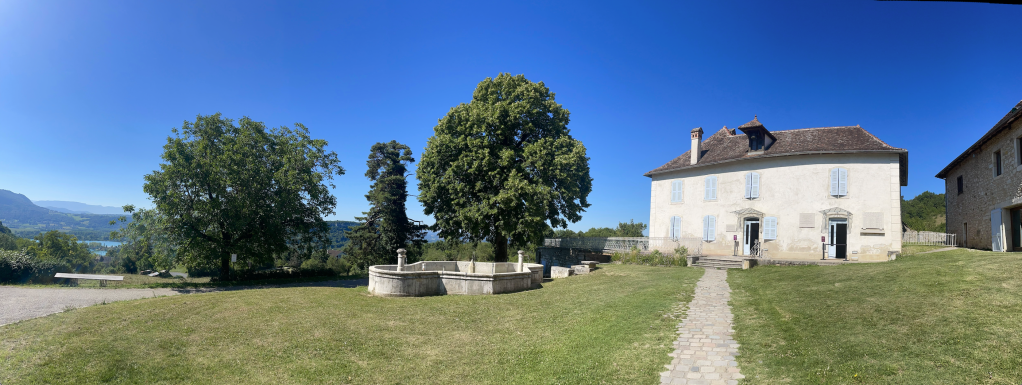
I ask that imagine yourself as a parent or guardian if you are not one already. What would you do if you were being persecuted for your race, religion, sexual orientation, or disability- and you had a child?
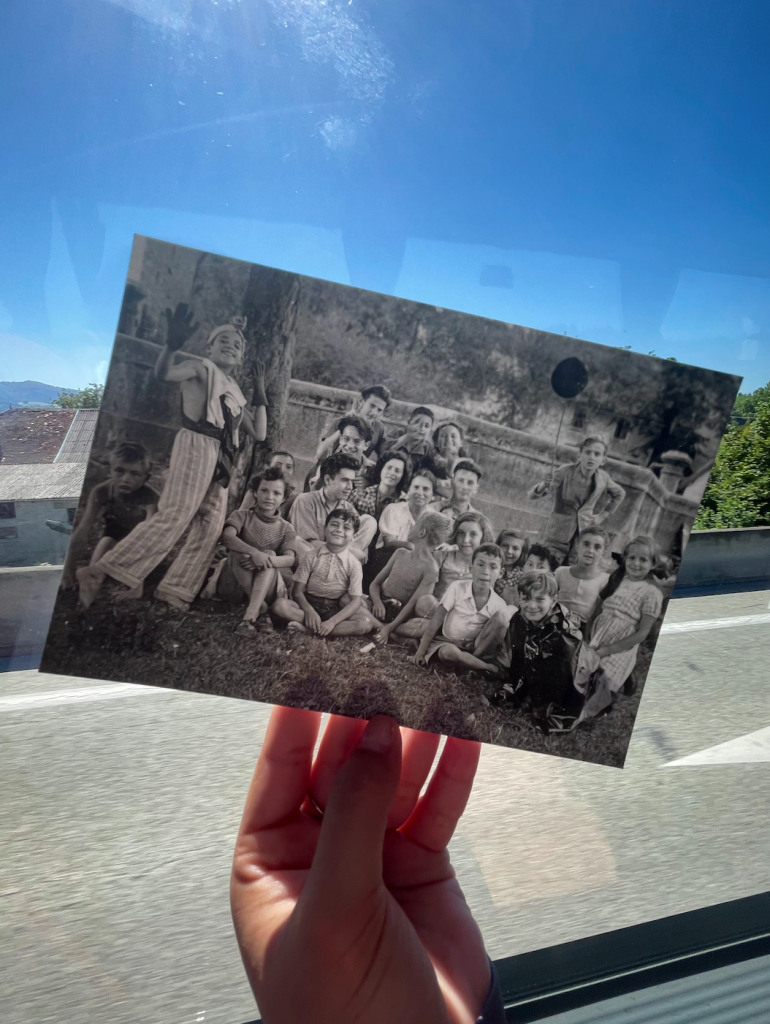
Many children lived their days in the comfort of the Maison’s summer camp since 1943. It was the vital goal of the teachers and the protectors, who were risking their lives, to ensure that these children had the childhood they deserved. Ages varied from the youngest being 4-years old to the oldest being 17-years old.
Unfortunately, the wrath of the Nazi Commander, Klaus Barbie, came marching up the mountain April 1944.
Having obtained information of the refugee, Klaus Barbie gave the command to arrest the “child colony” that had been being protected for months. All 44 children and 5 adult protectors were arrested and sent to be interrogated immediately.
It is vital to illustrate commander Klaus Barbie, who was also known as France’s Butcher. Just months before D-Day, and in a hurry to avoid local authorities intervening, Barbie had these children sent to the transit camp at Drancy. They were then sent to Auschwitz-Birkenau, where they faced a cruel ending.
All 44 children accounted for in the arrest were sentenced to death at Auschwitz-Birkenau through the gas chambers.
Not only is the cruel injustice of World War II already sickening, but more is knowing the unfortunate tale of the parents who sent their children to Maison d’Izieu and lived to tell the tale. There were various parents who awaited the return of their children after the war, only to find that the haven they had been sent to, was infiltrated by the Nazi.
We cannot change the history that has already been marked in time; but we can ensure that it does not repeat itself. 44 children and 5 protectors faced the death that over 70,000 other innocents faced.
And I ask myself, all these innocent deaths…Why?

Maison d’Izieu now serves as a memorial for the extermination of the 44 Jewish children and their protectors, in 1944. Director Dominique Vidaud and staff, facilitate the Maison and ensure that they tell the true tale of innocents that were silenced. Never forget.
NORMANDY AS TEXT
“Thomas Howie, America’s Fallen Hero,” by Karina Gonzalez of FIU in Normandy on July 22nd, 2022
“The eyes of the world are upon you. The hopes and prayers of the liberty-loving people everywhere march with you.”
General Dwight D. Eisenhower

It was April 12th, 1908, when a baby boy named Thomas D. Howie was born. An average boy growing up in Abbeville, possessing not only a competitive tribute on the athletic field, but also a yearning for academic progression. We often overlook that the soldiers who risked their lives during, but not only in, World War II, also lived a childhood- like you and I.
Figure 1.1
Thomas Howie was an athletic scholar. He graduated as president of his high school class and moved on to play football, boxing, and baseball in college. After college, he found his calling in the military- joining the Staunton Military Academy located in Virginia, as an English literature professor. However, Howie was also a member of the Army Reserve Corps before his transfer to the Virginia National Guard. [1]
I tell the history of Thomas Howie before the war, to allow the audience to put themselves in Howie’s shoes. At just 32 years of age, Thomas Howie had already had his life intact; he went to school, graduated, found a job in the military, got married at the age of 24, and had a child at the age of 30. But in the 1941, at the age of 32, second lieutenant, Thomas Howie, and the Guard’s 116th Infantry Regiment was called into active duty.
In observance of World War II, the world bore witness to the capabilities of man. Some lusting for more power, some rising for justice, and others turning away in fear. Thomas Howie was known amongst his regiment, also known as the Stonewall Brigade, as a “team player who was more concerned with his men and their well-being than advancing his own stature within the regiment.” [2] Battle strategies vary from commander to commander, and while some could take a more aggressive approach, Howie focused more on agility and the safety of his men first.
On 6th June 1944, the 166th Regiment, whom was part of the 29th division, landed in Omaha beach during the D-Day invasion. Along the 50-mile stretch of the Normandy Coast, the five targeted beaches for landing were Utah Beach, Omaha, Beach, Gold Beach, Juno Beach, and Sword Beach. Amongst the five, Omaha was given the name “bloody Omaha.” [3] While troops were able to advance within the other four beaches, the 116th Regiment faced stronger German opposition when trying to advance through Omaha.

The advancement of Omaha Beach has been recognized as one of Howie’s achievements, for the way in which he commanded and conducted the soldiers in his regiment. Through small groups, the soldiers were able to eventually break through the German lines, making their way off Omaha Beach.
However, Howie’s 116th Regiment suffered the worst casualty loss (more than one thousand causalities). After successfully leading the 116th through Omaha beach, Major Thomas Howie was given command of the 3rd battalion, where he was then tasked to take the town of Saint-Lô (St Lô).
Figure 3.1
Saint-Lô faced major destruction during D-Day throughout WWII. The town had a major road that led direct through Normandy, making St Lô was crucial to the United States. German forces recognized that without Saint-Lô, Allied Armies would not be able to cross into Normandy; therefore, the German occupation resided most strongly around the countryside with stronger armor and longer gun ranges. [3] Saint-Lô became such a crucial town to isolate German forces near the coast.
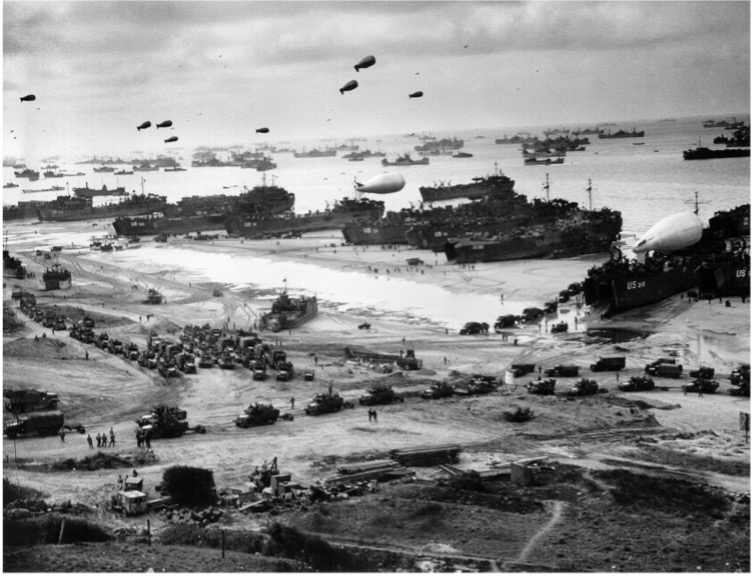
In times of war, however, we must be able to recognize the slaughter of innocents on both sides. Although Saint-Lô was crucial for British-American strategists in isolating German forces, many residents anguished in the bombings that took place on June 6 and onward. [4]
The night before Operation Overload, the codename given for the Battle of Normandy, news of the bombing was released into the town via flyers. However, wind was said to have blown away the flyers- leaving the residents of Saint-Lô unprotected once the bombings took place. Bombing of the city occurred twice more; civilian casualties were high. [4]
Figure 4.1
In times of war, however, we must be able to recognize the slaughter of innocents on both sides. Although Saint-Lô was crucial for British-American strategists in isolating German forces, many residents anguished in the bombings that took place on June 6 and onward. [4] The night before Operation Overload, the codename given for the Battle of Normandy, news of the bombing was released into the town via flyers. However, wind was said to have blown away the flyers- leaving the residents of Saint-Lô unprotected once the bombings took place. Bombing of the city occurred twice more; civilian casualties were high. [4]
Throughout his command over the 116th’s 3rd Battalion, Howie faced many difficulties aside from the heavy German occupation. Howie’s unit was exhausted and, with the large losses, weaker. That did not stop Howie from moving forward, however. Confidence and hope needed to be instilled on these soldiers, and that is exactly what their leader did. Even in the darkest of times, when it seemed as though the war would never end, Howie reminded his men that they had “survived the intense weeks of fighting.” [5] His efforts as commanding officer of the battalion did not end there, however. Major Thomas Howie also took it upon himself to spend time with the rest of the platoon and attain hot food for them when possible. [5]
These small actions instilled hope on the men, but, unfortunately, Thomas Howie was not able to see the end battle.
It was July 17th when the 3rd Battalion was station one mile out from Saint-Lô. The Battalion was given the order to “relieve” the 2nd Battalion, who was isolated from the rest of the 116th Regiment. The plan was two combines both Battalions and enter Saint-Lô together. With a few words of encouragement given to the commanders, what would be Howie’s final goodbye to his officers was, “See you in St. Lo!” [5]
Around 0430, the morning of July 17th, the 116th Regiment’s 3rd Battalion, Howie’s Battalion, attacked. While German opposition and artillery increased, Howie had given strict instructions to his men to “rely on bayonets and hand grenades.” 5 Therefore, the men did not return fire; they were successful in bypassing German forces by relying on their agility. Once the 3rd Battalion had bypassed the German occupation, they were able to reach the 2nd Battalion stationed near La Madeleine. However, they were in no condition to join in entering Saint-Lô.
After informing the Regiment commander, Howie gave the order to move into the “eastern edge of the town,” alone. [6] Moments after giving the order, though, the Germans began to attack the command post.
Howie’s concern for others safety, rather than his own, saved many men throughout his time. Unfortunately, it was his downfall. Once the mortar shell exploded, Howie’s focus was on ensuring that his men had taken shelter. In doing so, a mortar fragment pierced through his lung. His final words before he faced death were, “My God, I’m hit.” [6]
At the age of 36, Thomas Howie had lived a life that had no comparison. Many question his battle strategies, stating that if he used a more aggressive response (rather than telling his men to use bayonets and hand grenades), the mortar shell explosion attack could have been avoided. The reality, however, is that there would have been no possible way to know what the outcome would have been if Howie chose a different strategy.
What we do know, however, was his dedication the men he led. It is difficult to imagine how one would react if a war were to take place today. But it is even more difficult to put your life on the line, in battle, when you have so much to lose. Thomas Howie began his life as a regular boy; just like we all did. He went to school, he played sports, he got married, and he had a child.
Major Howie was respected amongst his Battalion and his Regiment. The day after his death, General Gerhardt made the order to continue moving forward once, what they hoped was the last battle, ended before entering Saint-Lô.
I’d like you to remember Howie’s final words to his commanding officers as they said goodbye. Do you remember them? Thomas Howie’s final goodbye was an assertive and confident goodbye, “See you in St. Lo.” It was a statement; there was no fear, there was no uncertainty.
And so, upon his death, General Gerhardt ordered that Howie’s body be driven into St. Lo, on the hood of a jeep, draped in an American flag. Thomas Howie was the first American to enter St. Lo. [7]
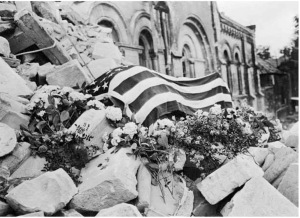
There are no words to describe the honor and respect the soldiers deserved, not only for continuously fighting throughout WWII, but also for the efforts they made in ensuring that Thomas Howie received the peace he fought for. Americans, French individuals, and soldiers all wanted to pay tribute to him, the fallen hero of America.
[1] Thomas D. Howie: The major of St. Lô. Warfare History Network.
1.1 Thomas D. Howie. Wikipedia
[2] Thomas D. Howie: The major of St. Lô: The Stonewall Brigade. Warfare History Network.
[3] Major Thomas Dry Howie: 3:50-4:25. YouTube.
3.1 Maps of World War II 1939-1945. Battle for St Lo, Jul. 10-18, 1944.
[4] The Capital of Ruins – Nine Facts About the Battle for Saint-Lô. MilitaryHistoryNow
4.1 Wikimedia Foundation. (2022, July 12). Operation overlord.
[5] Thomas D. Howie: The major of St. Lô: “See you in St. Lô!” Warfare History Network.
[6] Thomas D. Howie: The major of St. Lô: “My God, I’m hit.” Warfare History Network.
[7] Major Thomas Dry Howie: 6:00-7:00 YouTube.
7.1 Battle of Saint-Lô 75th anniversary commemoration at the WWII Memorial.
Works Cited
50fish. (2021, November 15). Thomas D. Howie: The Major Of St. Lô. Warfare History Network. Retrieved From Https://Warfarehistorynetwork.Com/Thomas-D-Howie-The-Major-Of-St-Lo/
Emerson, W. E. (2016, August 3). Howie, Thomas Dry. South Carolina Encyclopedia. Retrieved From Https://Www.Scencyclopedia.Org/Sce/Entries/Howie-Thomas-Dry/
Encyclopædia Britannica, Inc. (N.D.). Normandy Invasion. Encyclopædia Britannica. Retrieved From Https://Www.Britannica.Com/Event/Normandy-Invasion
National Archives And Records Administration. (N.D.). Rebuilding After World War II: The Experience Of Saint-Lô, France. National Archives And Records Administration. Retrieved From Https://Text-Message.Blogs.Archives.Gov/2014/11/18/Rebuilding-After-World-War-Ii-The-Experience-Of-Saint-Lo-France/
Says:, P. R., Says:, J. S. P., & Says:, J. (2019, March 14). The Capital Of Ruins – Nine Facts About The Battle For Saint-Lô. Militaryhistorynow.Com. Retrieved From Https://Militaryhistorynow.Com/2019/03/12/The-Capital-Of-Ruins-Nine-Facts-About-The-Battle-For-Saint-Lo/
Southcarolinaetv. (2013, September 25). Major Thomas Dry Howie. Youtube. Retrieved From Https://Www.Youtube.Com/Watch?V=5hvcj-Kvsta
St Lô/The Battle Of The Hedgerows. Battle Of Normandy Tours. (N.D.). Retrieved From Https://Www.Battleofnormandytours.Com/St-Locircthe-Battle-Of-The-Hedgerows.Html
Thomas D. Howie. Academic Dictionaries And Encyclopedias. (N.D.). Retrieved From Https://En-Academic.Com/Dic.Nsf/Enwiki/2234639
Thomas D. Howie. Military Wiki. (N.D.). Retrieved From Https://Military-History.Fandom.Com/Wiki/Thomas_D._Howie
Photograph Work Cited
Battle Of Saint-Lô 75th Anniversary Commemoration At The Wwii Memorial. Friends Of The National World War Ii Memorial. (N.D.). Retrieved From Https://Wwiimemorialfriends.Networkforgood.Com/Events/13773-Battle-Of-Saint-L-75th-Anniversary-Commemoration-At-The-Wwii-Memorial
Maps Of World War Ii 1939-1945. Battle For St Lo, Jul. 10-18, 1944. (N.D.). Retrieved From Https://Www.Onwar.Com/Wwii/Maps/Wfront/10wfront.Html
Wikimedia Foundation. (2022, July 12). Operation Overlord. Wikipedia. Retrieved From Https://En.Wikipedia.Org/Wiki/Operation_Overlord
Wikimedia Foundation. (2022, July 13). Thomas D. Howie. Wikipedia. Retrieved From Https://En.Wikipedia.Org/Wiki/Thomas_D._Howie
PÉRE LACHAISE AS TEXT
“The Living Memory of Victor Noir,” by Karina Gonzalez of FIU at Pere Lachaise on July 29th, 2022
“Our dead are never dead to us, until we have forgotten them.”
George Elliot
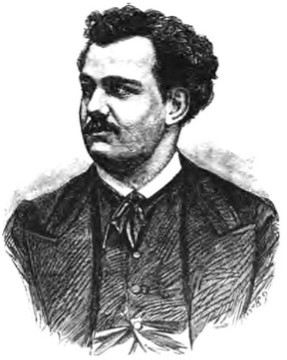
How do you suppose you would feel, not knowing that the day you are assigned the task of being a messenger, you wouldn’t live to see the next day? And more so, at the age of 21 years. In short, that is the infamous story of Victor Noir; however, there is more to Noir than just his unfortunate death.
Figure 1.1
Victor Noir, also known as Yves Salmon, was born July 27th, 1848. Although being born Jewish, Noir converted to Catholicism [1] and pursued a career as an apprentice journalist in Paris. However, in the 19th century, a new wave of revolution was crossing throughout Europe. One of the first published demonstrations seen regarding the political and economic strain on society was in Germany, when Karl Marx and Friedrich Engels released their publication of the communist Manifesto. This Manifesto highlighted the class struggle in society and exceeded the abolishment of “all existing social condition.” [2] France was no different than Germany, in that of the uprising from the people.
During the rule of Napoleon III, tensions were rising between the people of France and the French government. Recall that Napoleon I ruled as the Emperor of France until he was exiled in 1815 after he was defeated in the Battle of Waterloo. [3] With, there was a period where Napoleon II ruled, but only for few short days until the regime of the Restoration replaced the imperial regime.
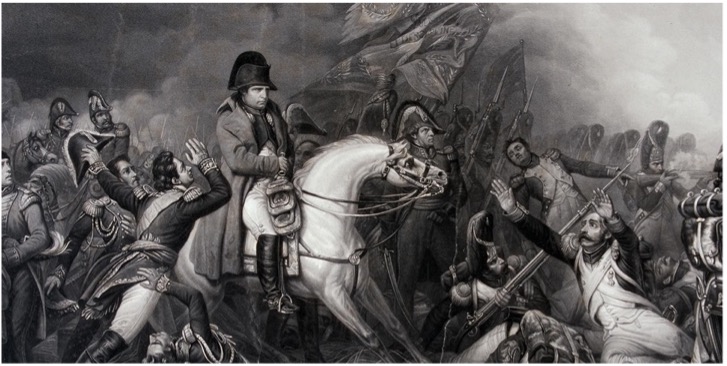
Unfortunately, when Napoleon III finally came into power, “there were conspiracies to overthrow the regime…” There were issues with Napoleon III rulings and issues with France once war was declared on Prussia. [4]
It is important to understand the social tensions occurring throughout the time, to understand the unfortunate tale of Victor Noir.
Victor Noir was an ordinary gentleman, similar to both you and me. At the age of 21, he had pursued a career as a journalist- apprenticing for “La Marseillaise” newspaper in Paris, France. Editor, Paschal Grousset, had published an article regarding Prince Pierre Bonaparte, cousin of Emperor Napoleon III. [5] However, the article in question was said to have controversial and enraged Bonaparte. Bonaparte’s response to the article was a direct challenge to Grousset for a duel. In accepting the duel, Grousset sent his “seconds (one of [which] was Noir)” to set the correspondence for the upcoming duel, the morning of January 10th, 1870. One misunderstanding led to another, and within moments, Victor Noir was shot to death by Bonaparte. [5]
The small caliber bullet Bonaparte had released towards Noir, perforated his lung near his heart, killing him before he could arrive to a doctor. [6]
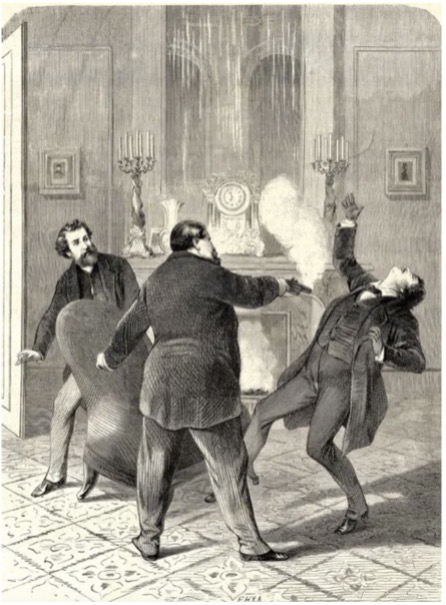
News of the death of the young 21-year-old begins to fly over through France. Various versions of the events, including Bonaparte’s diversion of “self-defense,” reaches the courts and outsets the nature of who the true assaulters and aggressors were. However, Napoleon III, who was conflicted with the news, decides to imprison his cousin, Bonaparte, to avoid civil riots from forming.
However, news of the murdered journalist by “a member of the emperor’s family” enraged the people of France.[7] The same people, who were already distressed with Napoleon III about the political structures occurring in the country. As a result, riots and violent acts were demonstrated throughout the streets after Bonaparte was acquitted of the murder charge. [7]
Figure 7.1
Although Victor Noir was not a revolutionary symbol when he was alive, his death stood for so much more. Noir became known throughout France, gaining more than 100,000 individuals attending his funeral. [8] His legacy, however, did not rise until about 20 years after his death.
In 1891, Noir’s body was moved from Neuilly, Noir’s hometown, to Pere Lachaise Cemetery. Jules Dalou was tasked in creating a sculptor for the fallen journalist to commemorate Victor Noir and what he died for. [9] The manner in which Dalou up took the design for Noir’s sculpture was done with great consideration.
Not only was Victor Noir’s statue created to replicate the same position he died in, but the statue also followed every detail of Noir’s physique, “Hair on his head, creases in his shoes, the lines on his face… the artist considered everything…” [10] But there was one intriguing aspect to Noir’s statue that the public did not understand: the large bulge in his pants. The sculptor, Dalou, specifically included and highlighted the bulge with his size and use of bronze on the particular area.
Victor Noir’s story began spreading throughout more of France and other countries. While no one really knew the exact reason the sculptor adding a large sized bulge to his statue, a myth began to erupt. The myth spoke that Noir’s statue was a symbol of “sexual satisfaction and fertility.” [11] Women from various locations would visit the cemetery to kiss Noir’s lips and rub the bronze area of the statue. Some myths were as followed:
| If you wished to get pregnant… | …touch the right foot of the statue |
| If you wished to have twins… | …touch the left foot of the statue |

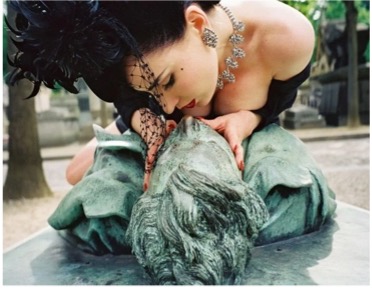


Victor Noir’s death was unfortunate, and can truly be seen as “wrong place, wrong time.” However, his death was one of many that led to the uprising of the French against the Second Republic of France. The young 21-year-old became a symbol of the revolution and a symbol for women. As an individual in the same age range as Noir, I wonder how impactful and unfortunate it would be to just be “doing my job,” not knowing that it would be what would kill me. I understand the resentment and rage inflicted by the French, for had a member of the royal family been protected for the murder of a civilian, I too would think it was unjust.
After all, does one’s life not hold the same value if there is no title to attached to one’s name?
[1] Alchetron, The Free Social Encyclopedia. Victor Noir
1.1 Wikimedia Foundation. Victor Noir.
[2] Napoleon III, Emperor of The French (1808-1873).
[3] A&E Television Networks. Napoleon Dies in Exile.
3.1 National Army Museum. Battle Of Waterloo.
[4] Encyclopædia Britannica, Inc. Franco-German War.
[5] Route, E. C. The Bizarre Fame of Victor Noir.
[6] Lunghignano. L’ Affaire Victor Noir Avec Olivier Bianconi, Florence Braka, Xavier Noël Et Bertrand Munier.
[7] Route, E. C. The Bizarre Fame of Victor Noir.
7.1 Jen. The Story of Victor Noir & The Sexiest Tomb in France.
[8] Route, E. C. The Bizarre Fame of Victor Noir.
[9] Jen. The Story of Victor Noir & The Sexiest Tomb in France.
[10] Jen. The Story of Victor Noir & The Sexiest Tomb in France.
[11] Jen. The Story of Victor Noir & The Sexiest Tomb in France.
11.1 Kuriositas. Victor Noir: Still Pleased to See You (Even in Death).
Works Cited
A&E Television Networks. (2010, March 3). Napoleon Dies in Exile. History.Com. Retrieved from Https://Www.History.Com/This-Day-In-History/Napoleon-Dies-In-Exile
Encyclopædia Britannica, Inc. (N.D.). Franco-German War. Encyclopædia Britannica. Retrieved From Https://Www.Britannica.Com/Event/Franco-German-War
Encyclopædia Britannica, Inc. (N.D.). From 1789 To the Mid-19th Century. Encyclopædia Britannica. Retrieved From Https://Www.Britannica.Com/Art/French-Literature/From-1789-To-The-Mid-19th-Century
Encyclopædia Britannica, Inc. (N.D.). Napoleon III. Encyclopædia Britannica. Retrieved From Https://Www.Britannica.Com/Biography/Napoleon-III-Emperor-Of-France
Jen. (2022, February 24). The Story of Victor Noir & The Sexiest Tomb in France. Indie88. Retrieved From Https://Indie88.Com/The-Story-Of-Victor-Noir-The-Sexiest-Tomb-In-France/
L’affaire Victor Noir: Le Procès Médiatique D’un Bonaparte Accusé De Meurtre. Napoleon.Org. (N.D.). Retrieved From Https://Www.Napoleon.Org/Histoire-Des-2-Empires/Articles/Laffaire-Victor-Noir-Le-Proces-Mediatique-Dun-Bonaparte-Accuse-De-Meurtre/
Lunghignano. (2021, January 26). L’ Affaire Victor Noir Avec Olivier Bianconi, Florence Braka, Xavier Noël Et Bertrand Munier. YouTube. Retrieved From Https://Www.Youtube.Com/Watch?V=Ykkdxu8tyg4
Napoleon III, Emperor of The French (1808-1873). Napoleon.Org. (N.D.). Retrieved From Https://Www.Napoleon.Org/En/Young-Historians/Napodoc/Napoleon-Iii-Emperor-Of-The-French-1808-1873/
Route, E. C. (N.D.). The Bizarre Fame of Victor Noir. European Cemeteries Route. Retrieved From Https://Cemeteriesroute.Eu/Projects/Stories/The-Bizarre-Fame-Of-Victor-Noir.Aspx
Victor Noir – Alchetron, The Free Social Encyclopedia. Alchetron.Com. (2018, March 6). Retrieved From Https://Alchetron.Com/Victor-Noir
Photograph Work Cited
Battle Of Waterloo. National Army Museum. (N.D.). Retrieved From Https://Www.Nam.Ac.Uk/Explore/Battle-Waterloo
Jen. (2022, February 24). The Story of Victor Noir & The Sexiest Tomb in France. Indie88. Retrieved From Https://Indie88.Com/The-Story-Of-Victor-Noir-The-Sexiest-Tomb-In-France/
Kuriositas. (N.D.). Victor Noir: Still Pleased to See You (Even in Death). Kuriositas. Retrieved From Https://Www.Kuriositas.Com/2013/04/Victor-Noir-Still-Pleased-To-See-You.Html
Wikimedia Foundation. (2022, July 12). Victor Noir. Wikipedia. Retrieved From Https://En.Wikipedia.Org/Wiki/Victor_Noir

